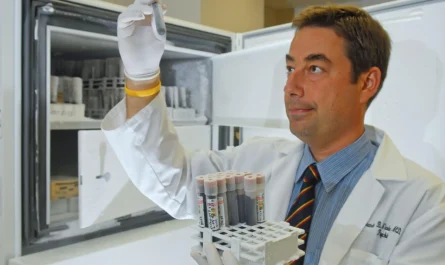Degenerative joint disease, also known as osteoarthritis (OA), affects around 1 in 7 adults. OA is a chronic condition that is characterized by the degeneration of cartilage in the joints. Currently, there are limited treatment options for OA as the cartilage does not regenerate after birth. Most treatments focus on managing symptoms rather than providing a cure. As a result, OA remains one of the leading causes of pain and disability in the United States.
However, a team of researchers from Boston Children’s Hospital is working on a potential breakthrough. Led by April Craft, Ph.D., the team aims to grow cartilage in the lab that can be used to replace damaged cartilage in patients’ joints. The researchers first sought to understand how cartilage and joint tissues naturally develop and how stem cells differentiate into cartilage cells, known as chondrocytes. They then replicated this process in the lab, enabling cells to go through the same stages of development.
In a study published in the Annals of the Rheumatic Diseases, the Craft Lab described their method for generating cartilage from induced pluripotent stem cells (iPSC). iPSCs are derived from patients’ own cells and have the potential to develop into any type of cell, including chondrocytes. The team successfully generated cartilage-like tissues from two patients with progressive pseudorheumatoid arthropathy of childhood (PPAC), a genetic condition that causes severe premature joint degeneration.
The next step for the researchers is to test the procedure in large animals. They have already repaired damaged joint tissues in rats using cartilage engineered in the lab. The joint-lining cartilage is avascular, meaning it has no blood supply. This reduces the likelihood of rejection when implanted since the chondrocytes are encased by the cartilage tissue itself. Craft believes that in the future, off-the-shelf cartilage for human patients could be created using a single cell line. Live cartilage tissues could be produced, stored, and delivered to surgical teams when needed to replace damaged cartilage.
The procedure being developed by the team bears similarities to autologous chondrocyte implantation, the most advanced cell therapy for cartilage currently available. In this two-step process, chondrocytes are harvested from one part of the body, multiplied in number, and then implanted into the damaged area. Off-the-shelf cartilage implants would eliminate the need for two surgical procedures. Instead, a piece of new cartilage that was generated ahead of time would be used to replace the damaged cartilage. This would reduce the manufacturing delay associated with autologous cartilage harvesting, shorten rehabilitation time, and enable patients to return to normal activities sooner after surgery.
Initial recipients of the novel cartilage implant would likely be patients with joint pain and damage who have not yet reached severe degeneration. In the future, it could also be tested on athletes with joint damage. The development of this engineered cartilage could have a significant impact on both the aging population and athletes experiencing joint pain and injuries
*Note:
1. Source: Coherent Market Insights, Public sources, Desk research
2. We have leveraged AI tools to mine information and compile it




